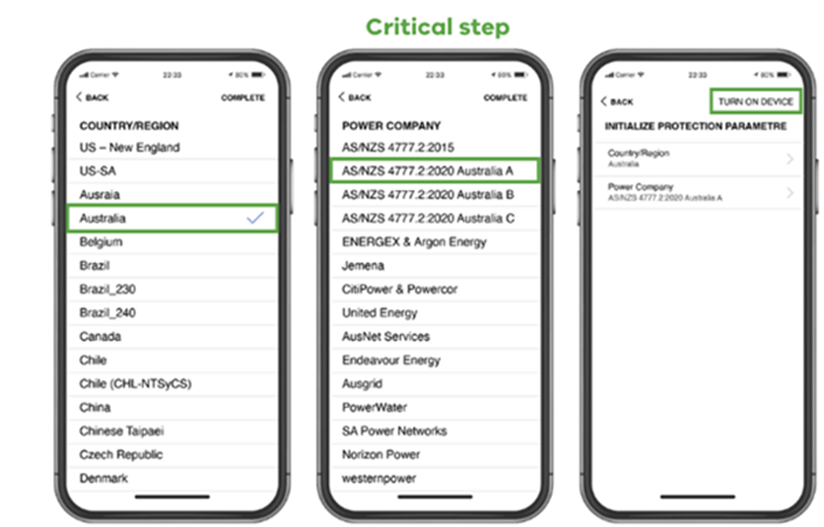Once the system has been installed, use the inverter manufacturer’s app or portal to commission the system (in-band registration) or generate an LFDI (out-of-band registration).

The images above show an example of this process; however, this may differ depending on the inverter manufacturer.
Sometimes inverter manufacturers may need to remotely adjust inverter settings. This is to comply with technical and safety obligations. To allow this, activate the remote access on your inverter to ensure your connection is not interrupted and the grid continues to operate safely.


.jpg?h=1003&iar=0&w=1504&rev=7d93ee5b2f2a4d99868c7a24e1090944&hash=A4E81538E75F602ED18B26EB8160DCBB)